The Montezuma Castle and Montezuma Well National Monuments are two attractions that you need to explore. The Sinagua people lived and thrived in the Verde Valley and had dwellings at both of these sites. This post will give you the background on the Montezuma Well Arizona National Monument so you, and your significant others, can explore this historical site.
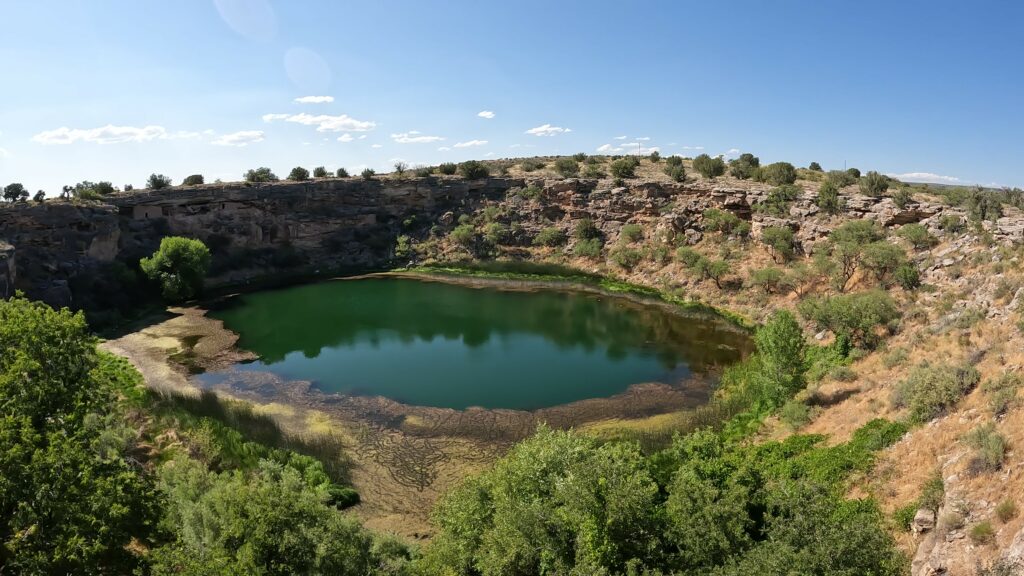
What is the Montezuma Well National Monument?
The Montezuma Well is a natural limestone sinkhole that measures 386 feet in diameter from rim to rim. It’s 55 feet deep and sits at an elevation of 3, 618 feet. It has a nearly constant temperature of 74 degrees Fahrenheit. It constantly feeds the Beaver Creek where the Sinagua community captured the water flow for cultivation.
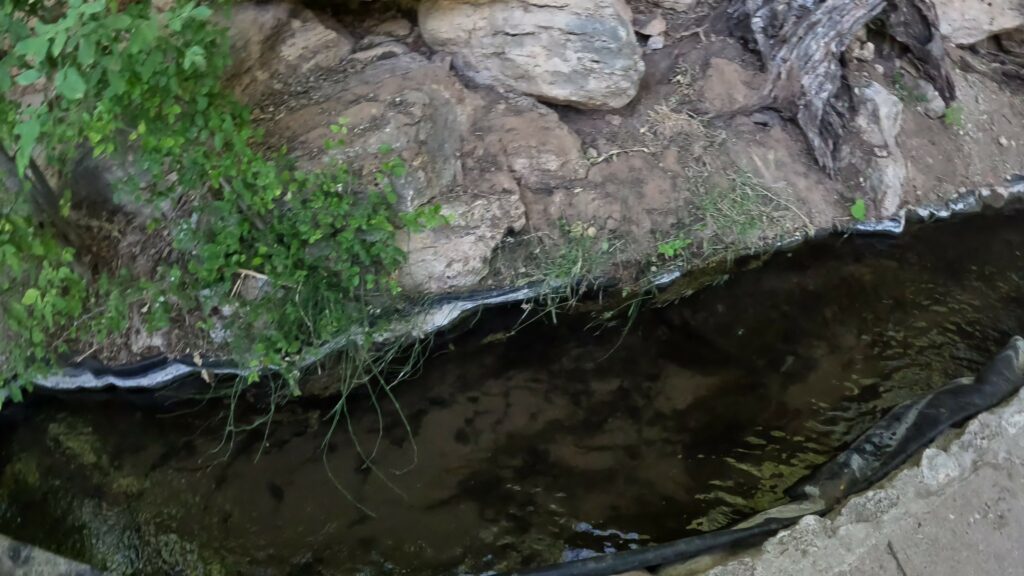
The Montezuma Well is a sub-unit of the Montezuma Castle, managed by the Park Service. There is no visitor center at this location. Rather, the Visitors Center at Montezuma Castle National Monument, only 11 miles away, provides information for both historical areas.
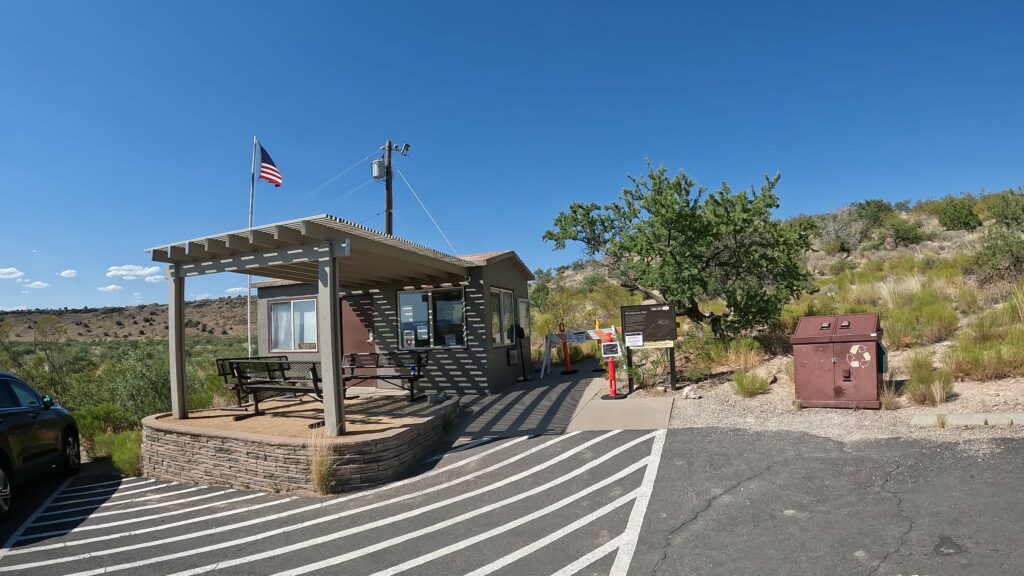
Where is the Montezuma Well National Monument?
The Montezuma Well is located in the Verde Valley of Central Arizona, south of Sedona and Cottonwood, where our B&B for this leg of the trip was located.
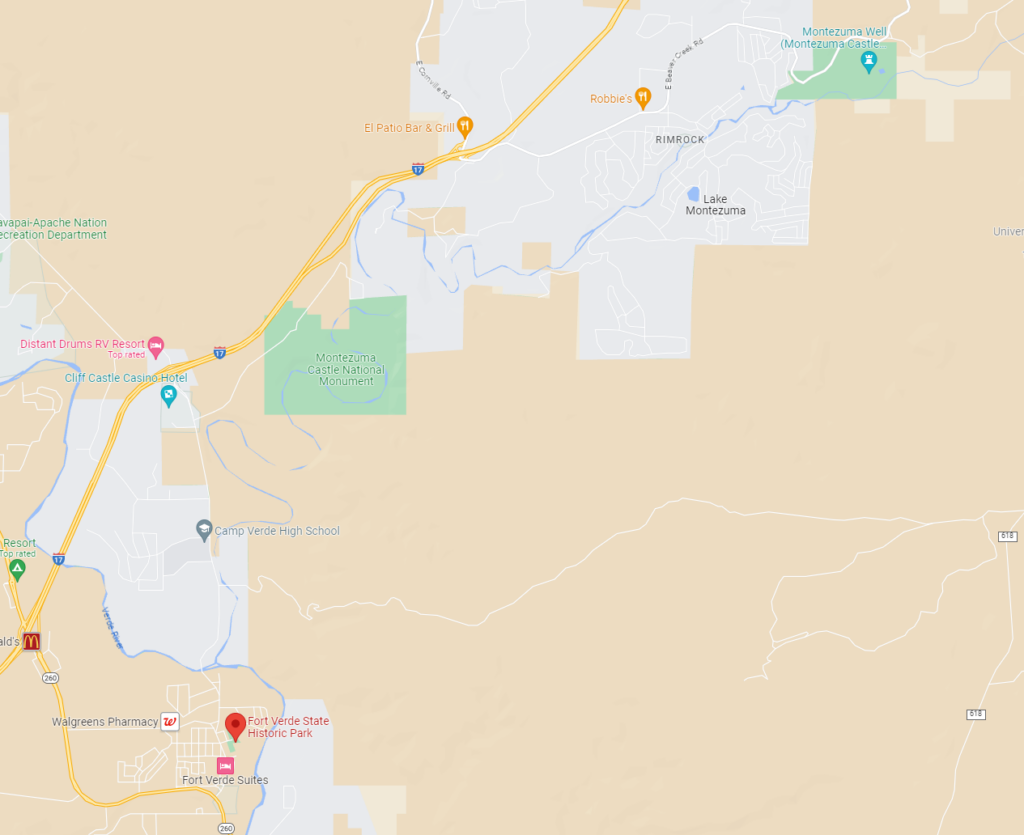
The Montezuma Well National Monument is located about 11 miles northeast, or 15 to 20 minutes from Montezuma Castle National Monument. So you want to kind of combine these into one package.

You may also want to check out Fort Verde, which is in Camp Verde, the closest town. It’s only 4 miles from Montezuma Castle National Monument to Fort Verde Historic State Park.
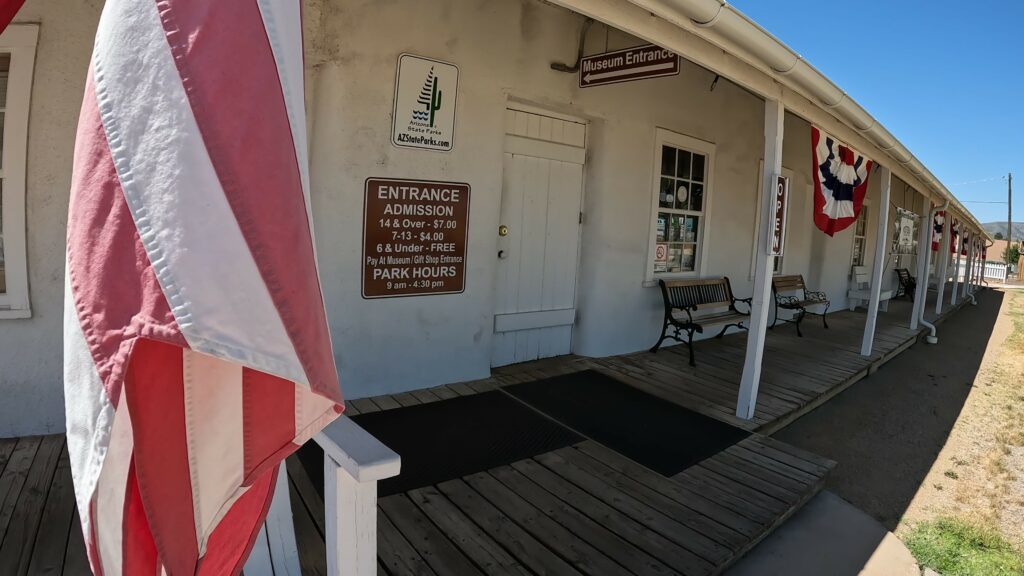
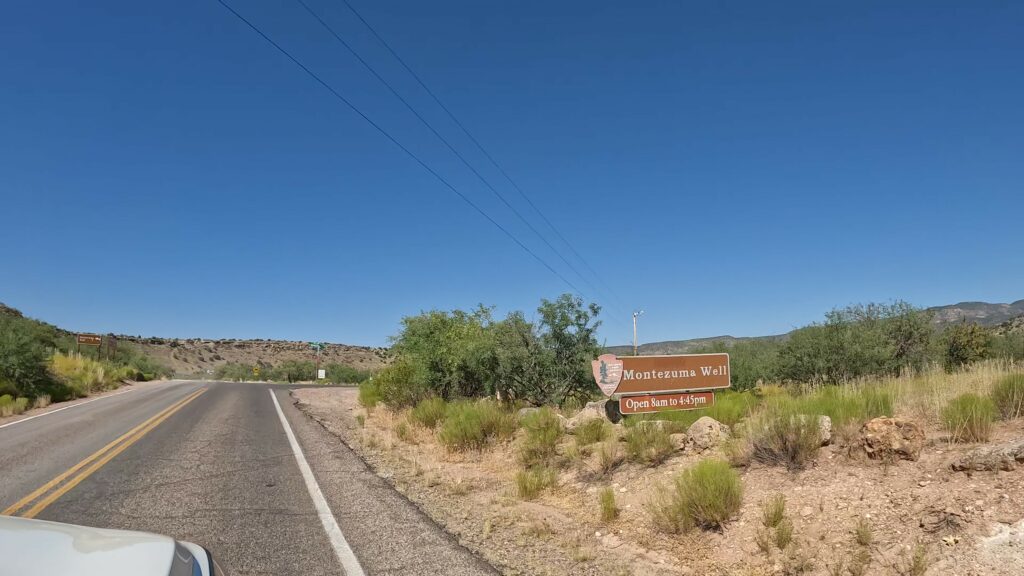
What’s the History behind the Montezuma Wells National Monument?
The availability of water in this area of the Verde Valley is critical for life to exist. In an entire year though, the Montezuma Well receives less than 13 inches of rainfall, which is about a third of the national average for the United States.
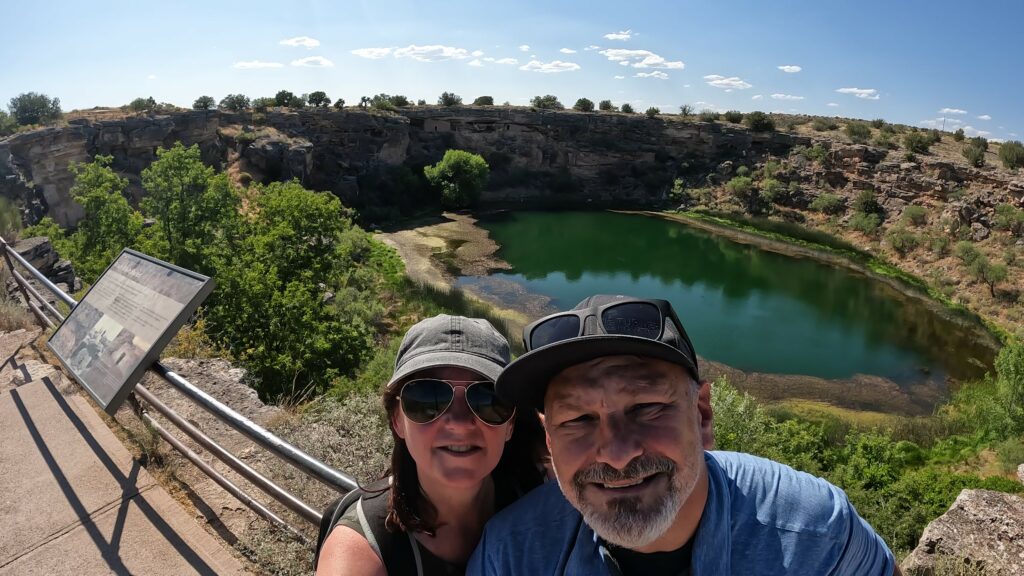
Yet, the well contains over 15 million gallons of water. Although it does contain arsenic, waterfowl and various animals call this home or at least on a seasonal basis. You can clearly see how alive and green the ecosystem is around the well.
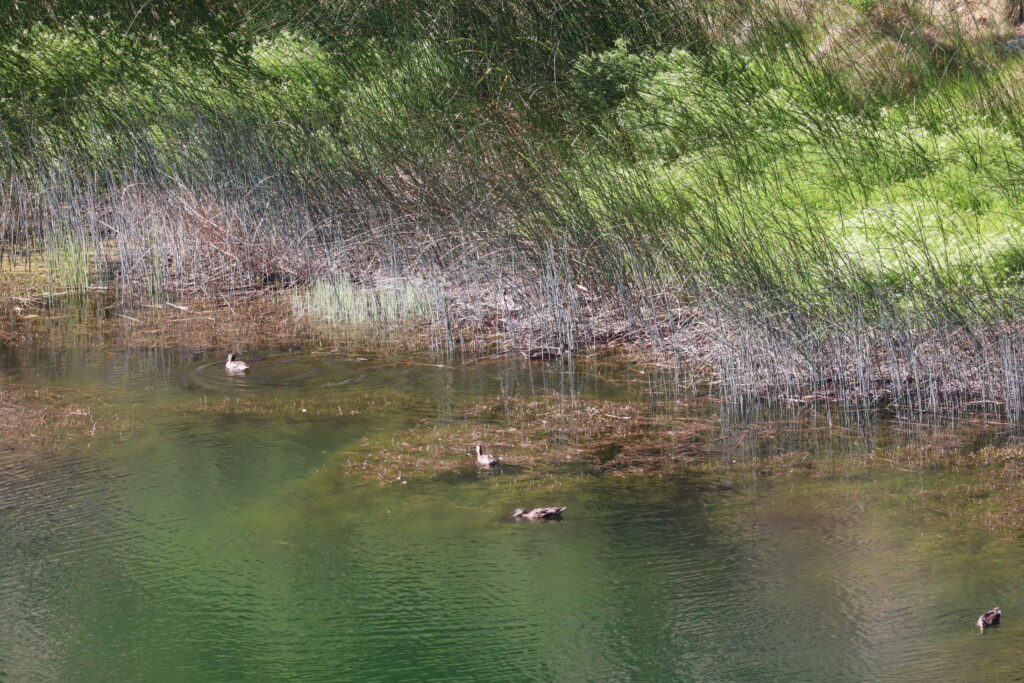
So where does it come from and how does it get there?
A Violent History of the Area
The Verde Valley had a violent history. About 3 million years ago, a volcanic eruption from Squall Peak, southwest of Camp Verde, poured lava down the mountainside and blocked the canyon through which the ancient Verde River flowed.
A series of lakes were backed up behind the dam and covered most of the valley. Lake overflow patiently wore and deepened a permanent stream channel through the lava dam. Through the long centuries after the draining of the lake, groundwater slowly dissolved the limestone, forming an immense underground water-filled cavern.
The Outlet
Beaver Creek eventually intersected one of the side passages, and the water supporting the roof began to empty into the creek. With the support missing, the weakened limestone above the cave collapsed, and Montezuma Well came into being. Every day the well is replenished with 1. 5 million gallons of water, which has a nearly constant temperature of 74 degrees Fahrenheit.
The water overflows through a long, narrow cave in the southeast rim to appear on the other side at the outlet. Montezuma Well’s steady outflow has been used for irrigation since the 8th century. Part of a prehistoric irrigation ditch is preserved near the park’s picnic area, and portions of the ditch’s original route are still in use today.
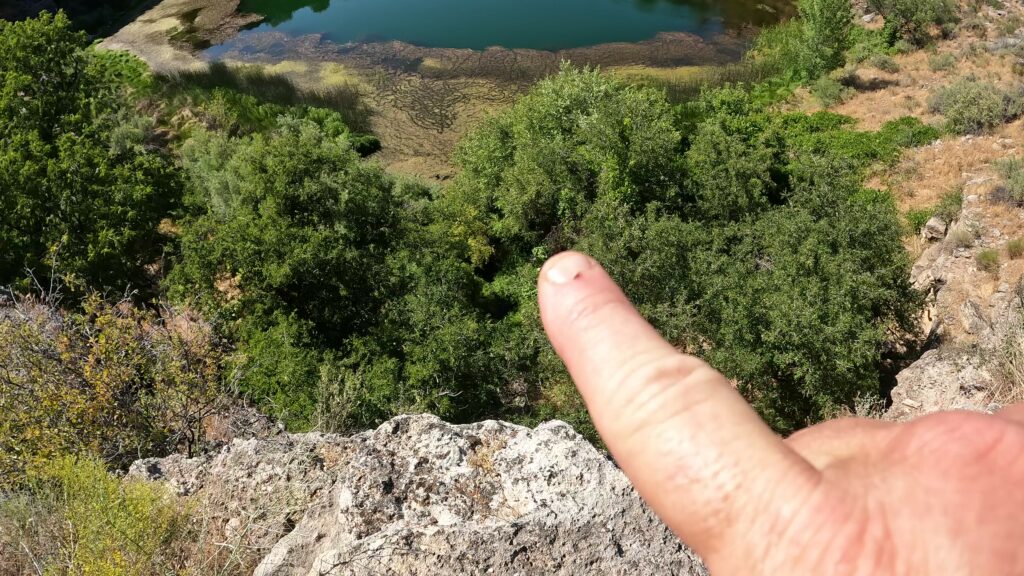
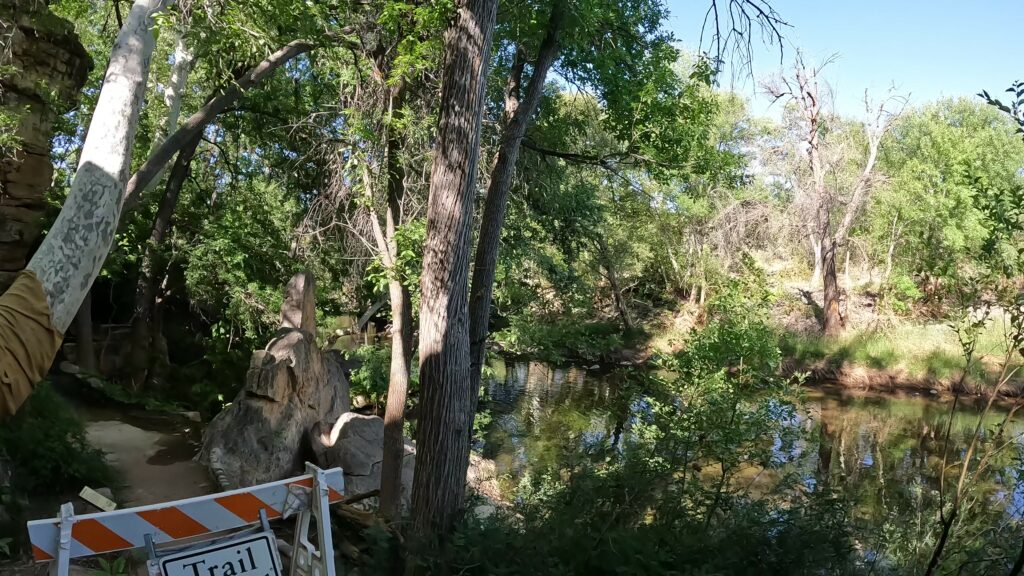

The Dwellings
Beneath the rim, there are cliff dwellings within the eroded cavities.
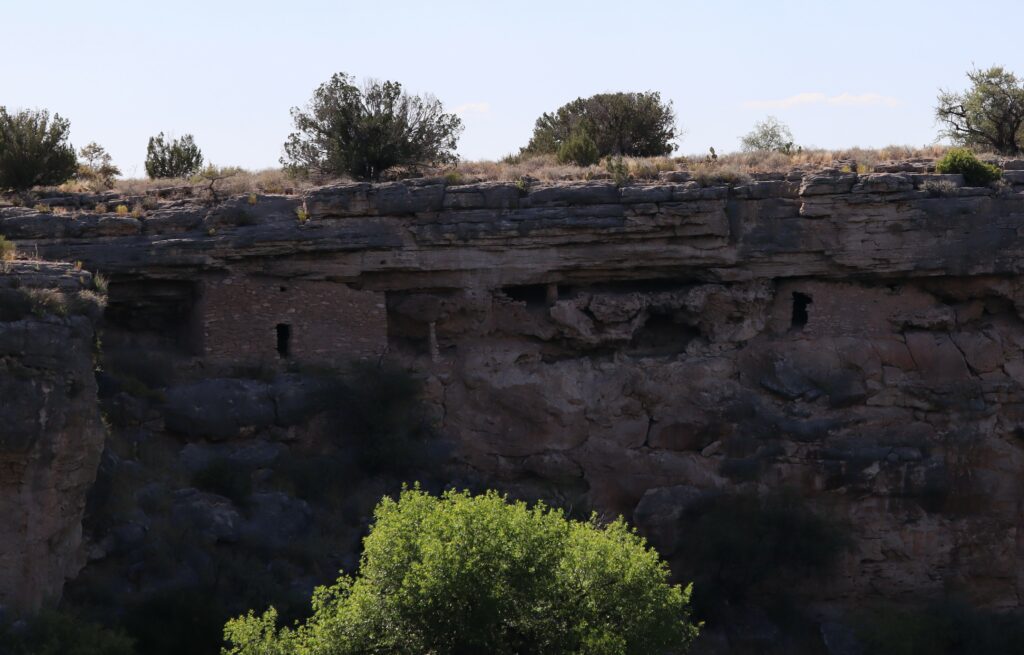

Along the trail, you will see evidence of permanent settlement spanning from more than 1, 000 years, though people had probably lived here much longer than that. One of the cultures to build homes here was probably the Hohokam, here from the Salt River Valley in southern Arizona.
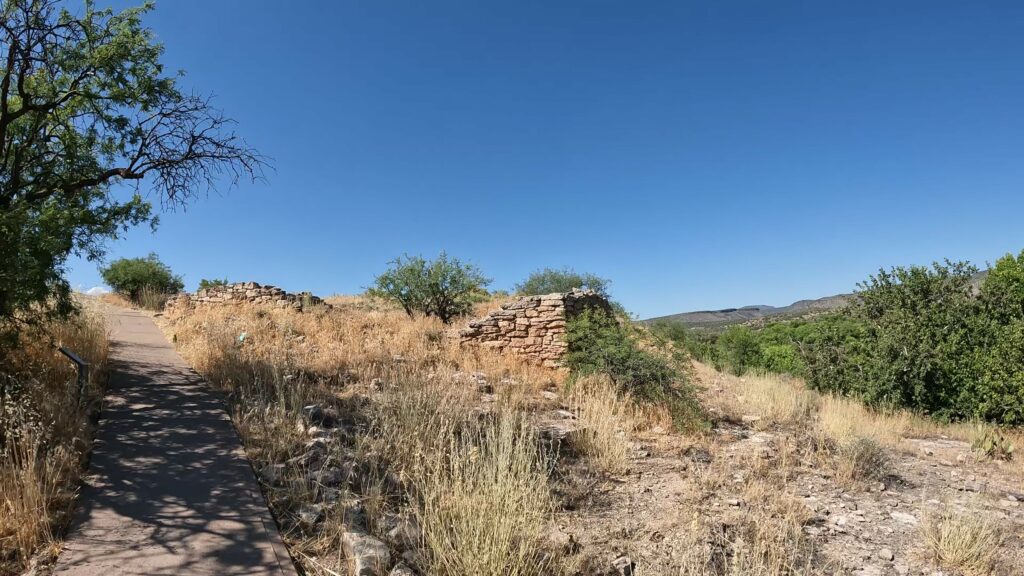
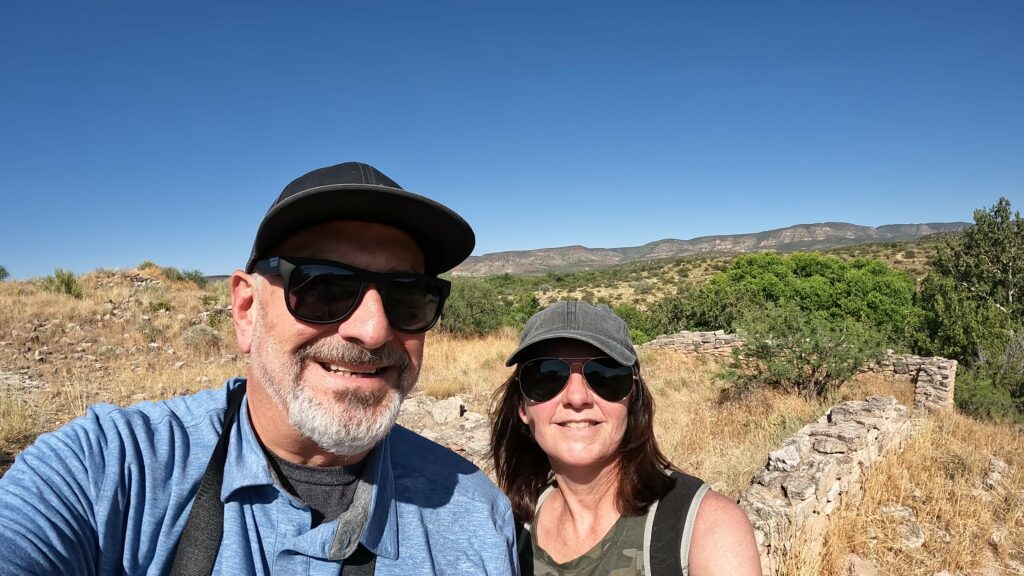
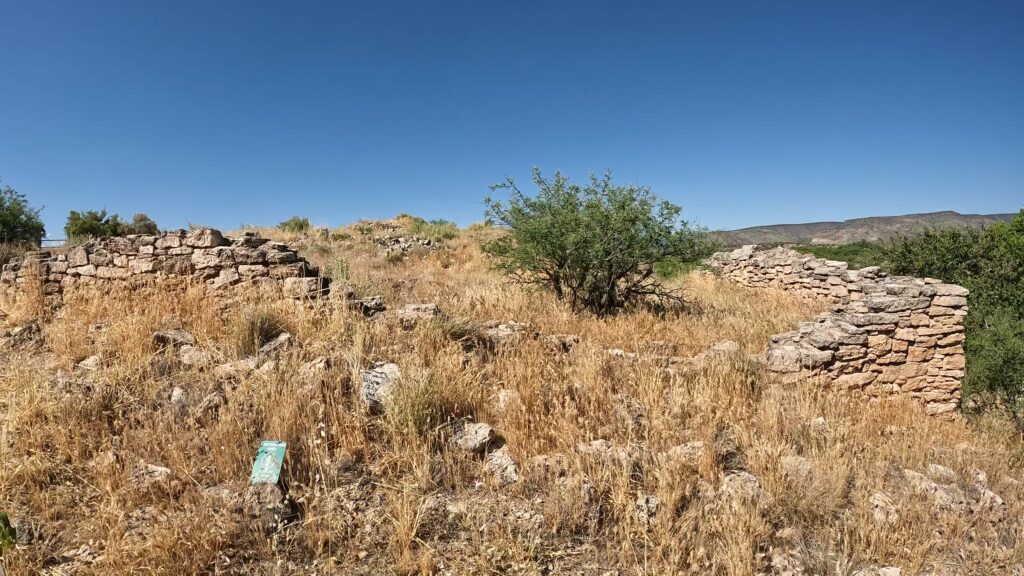
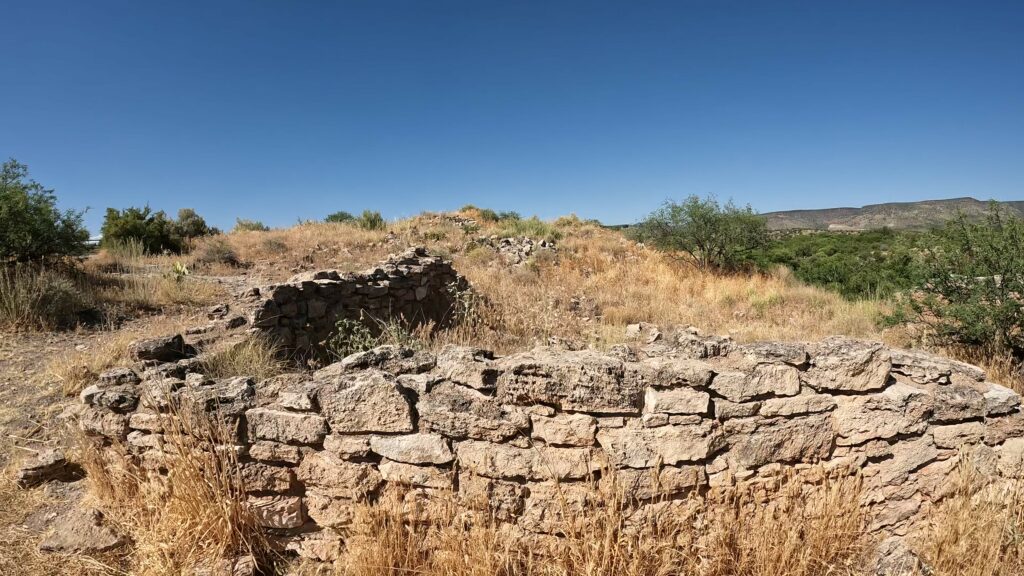
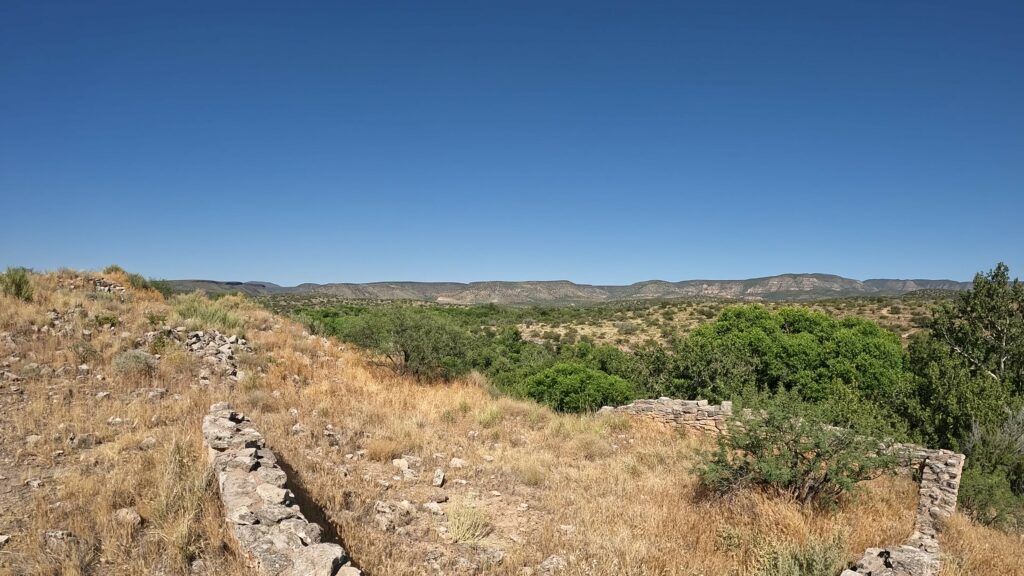
The PitHouse
This pithouse, dated around 1050 CE, is exemplary of their architecture.
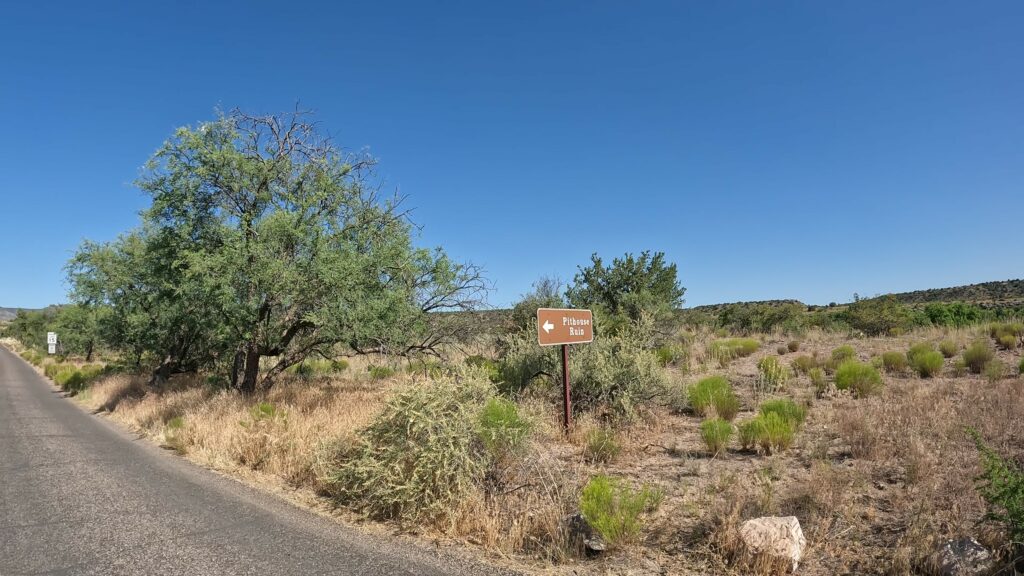
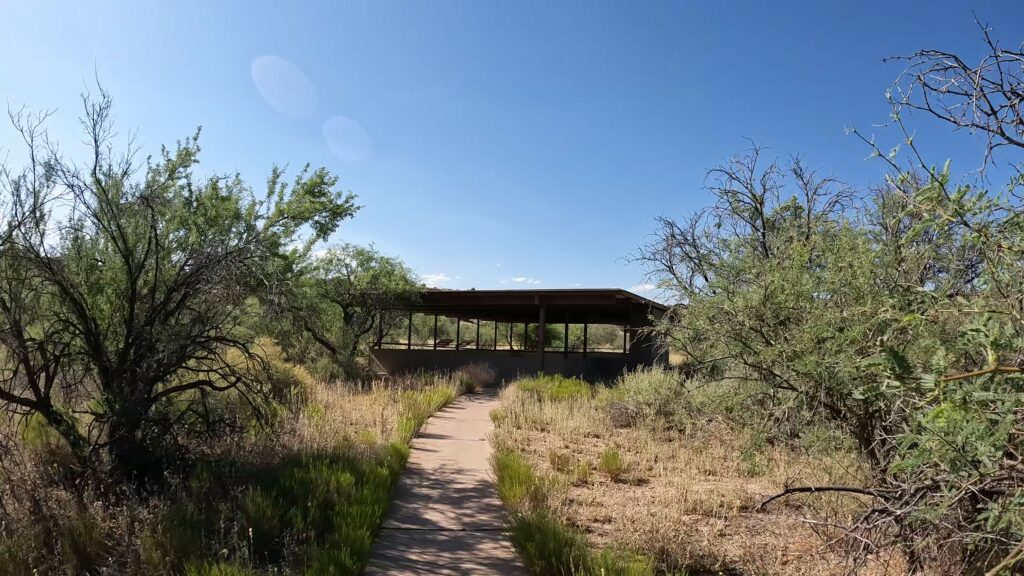
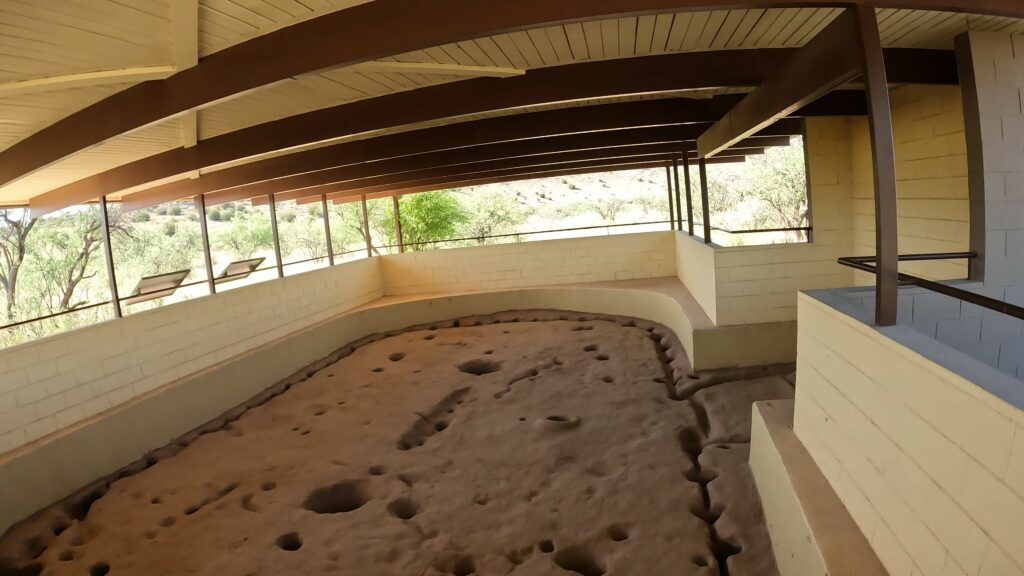
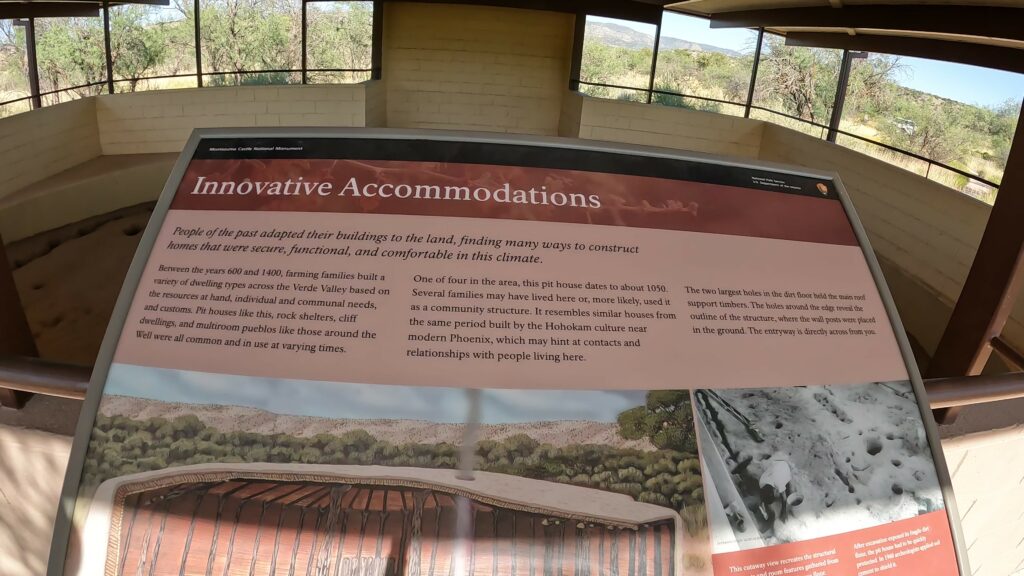
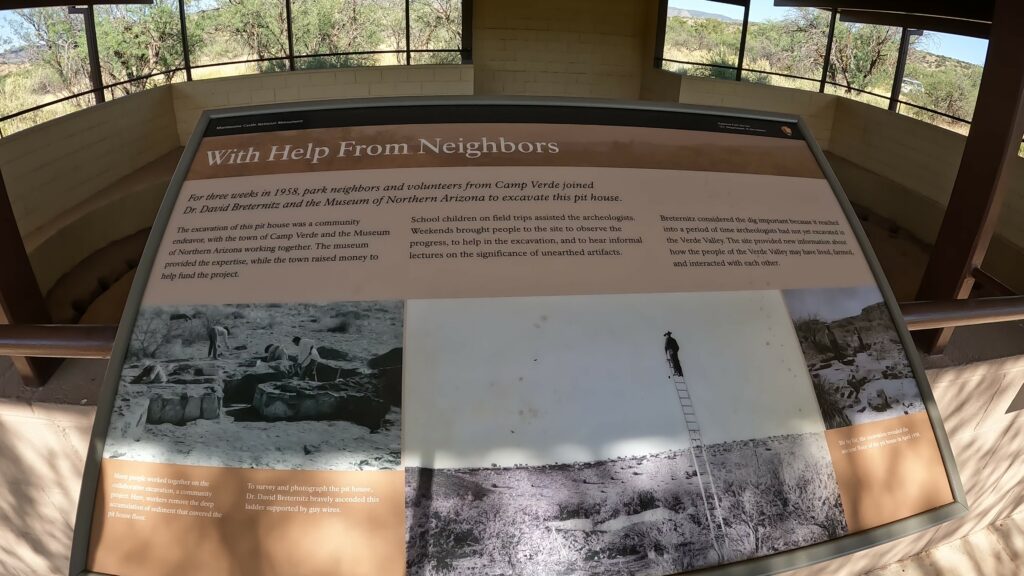
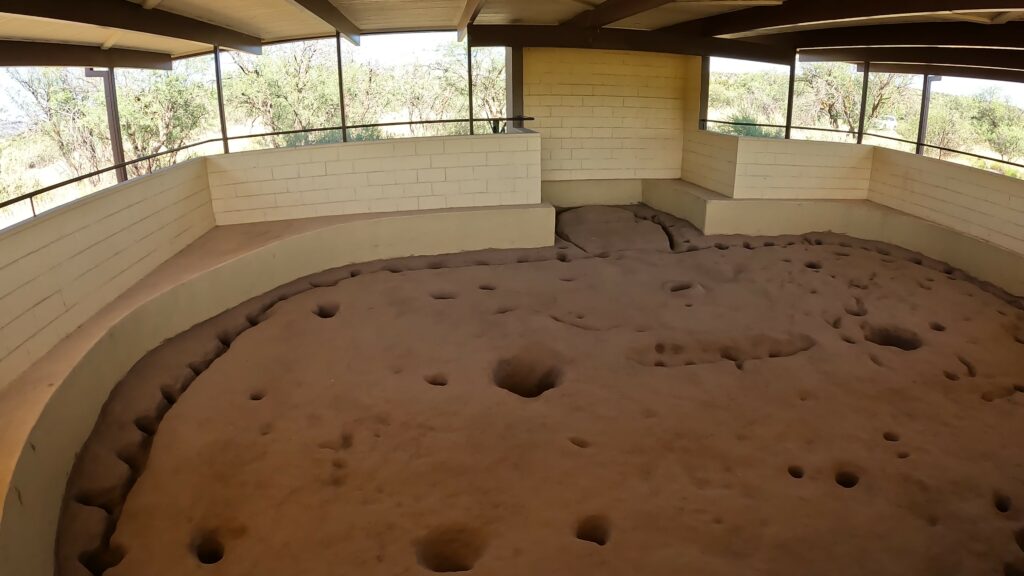
Wet Beaver Creek and the Outlet
A second trail leads down from the main loop to the outlet near Wet Beaver Creek. This trail is lined with giant sycamore trees and velvet ash.
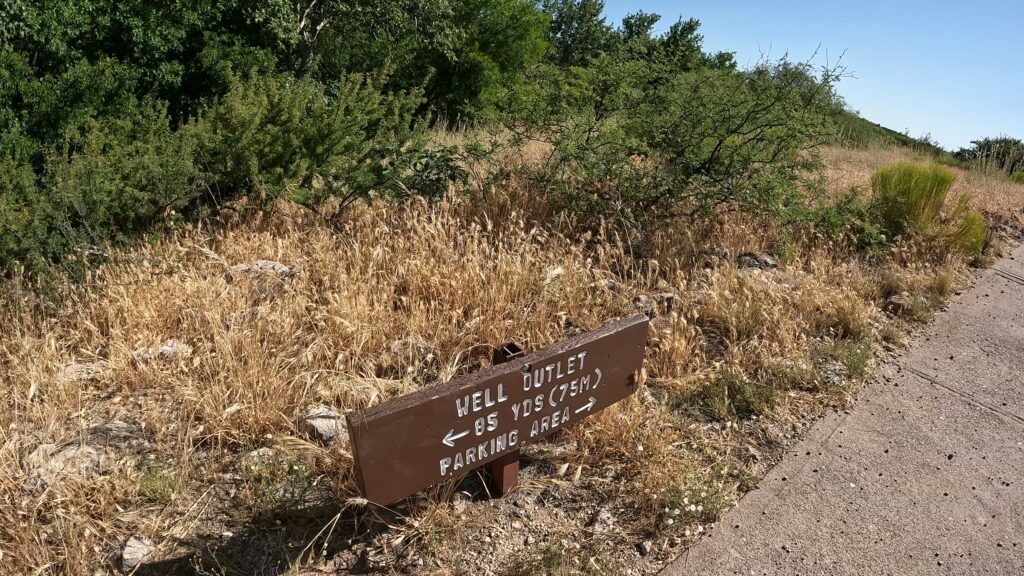
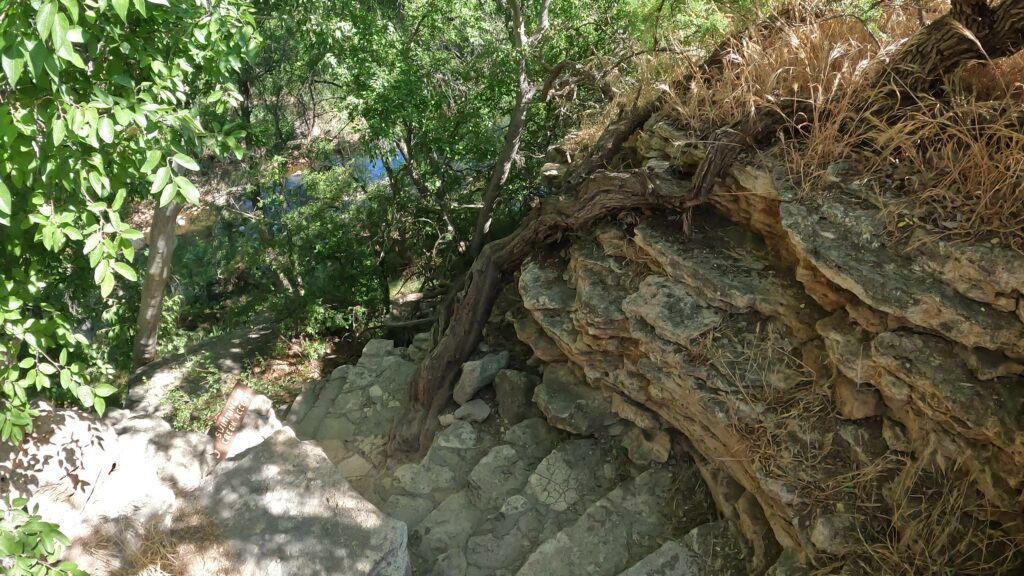
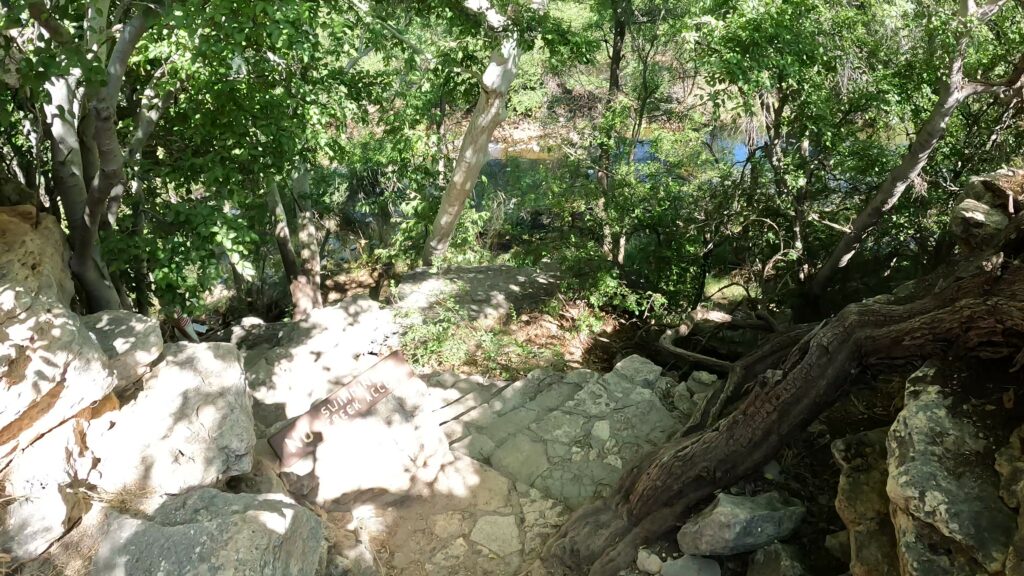
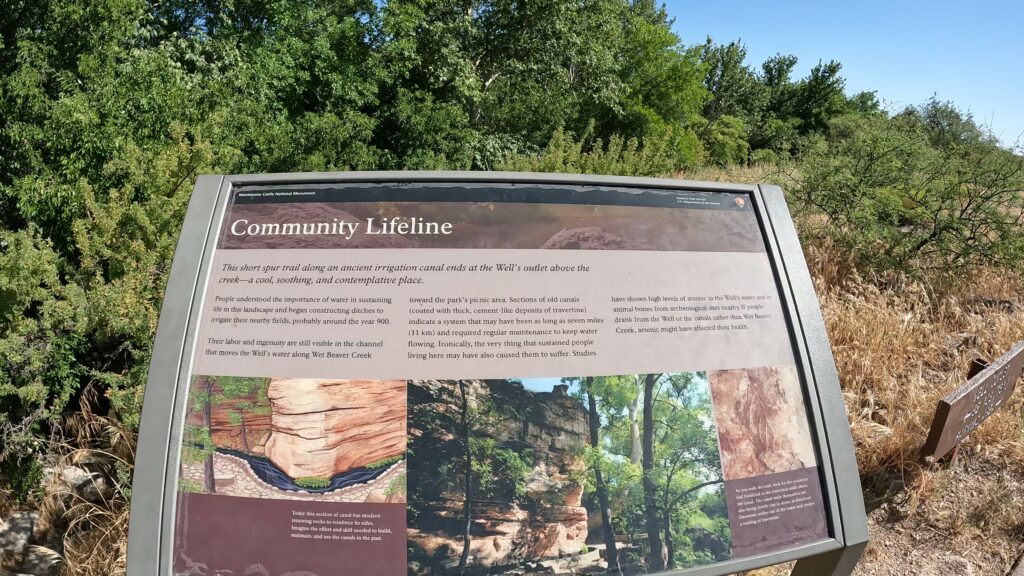
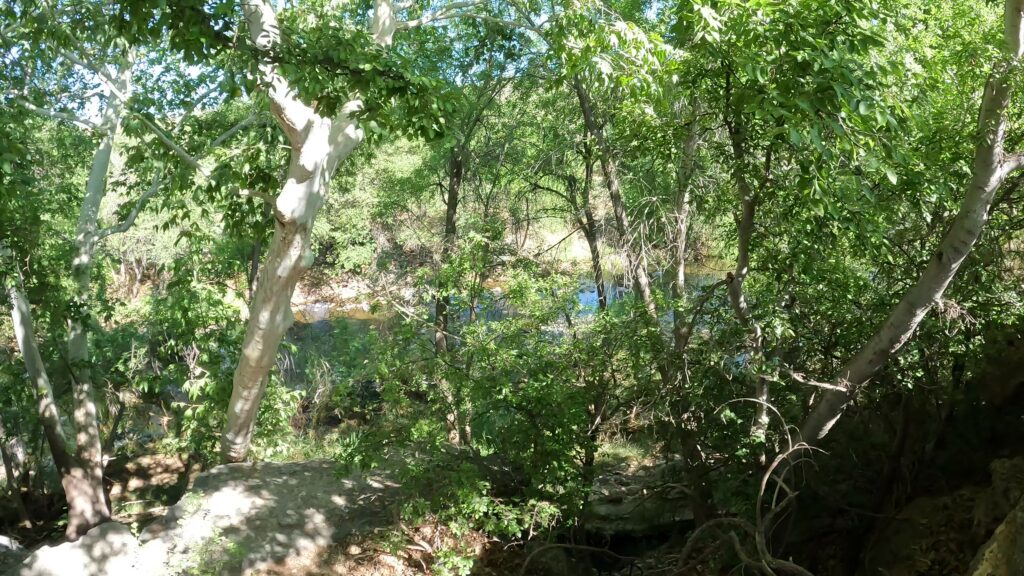
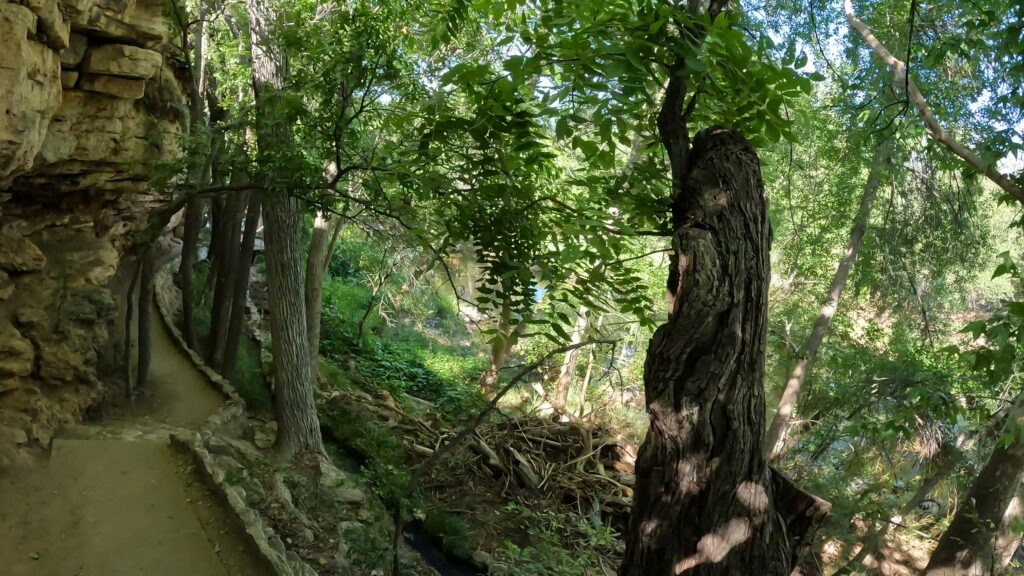
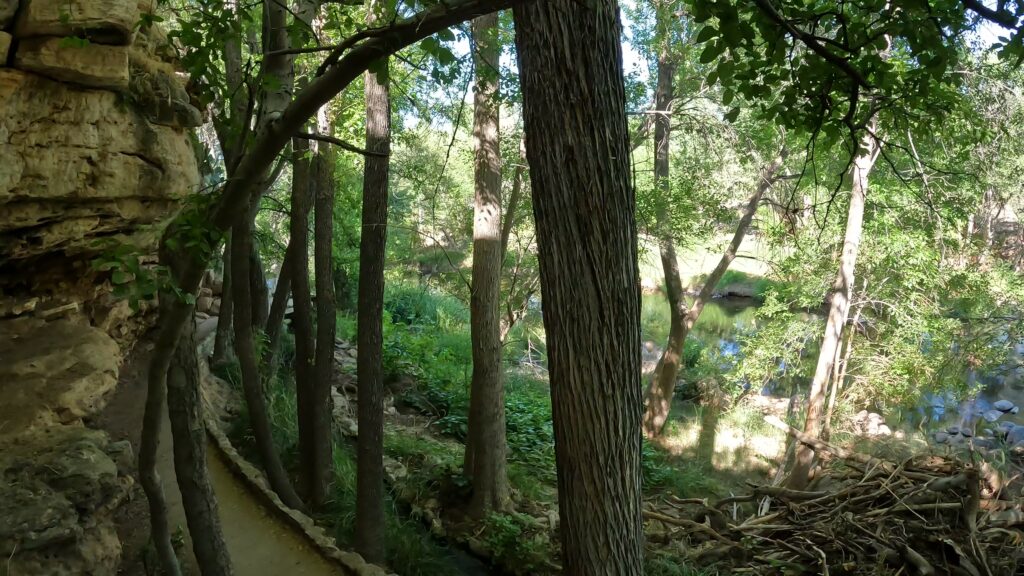

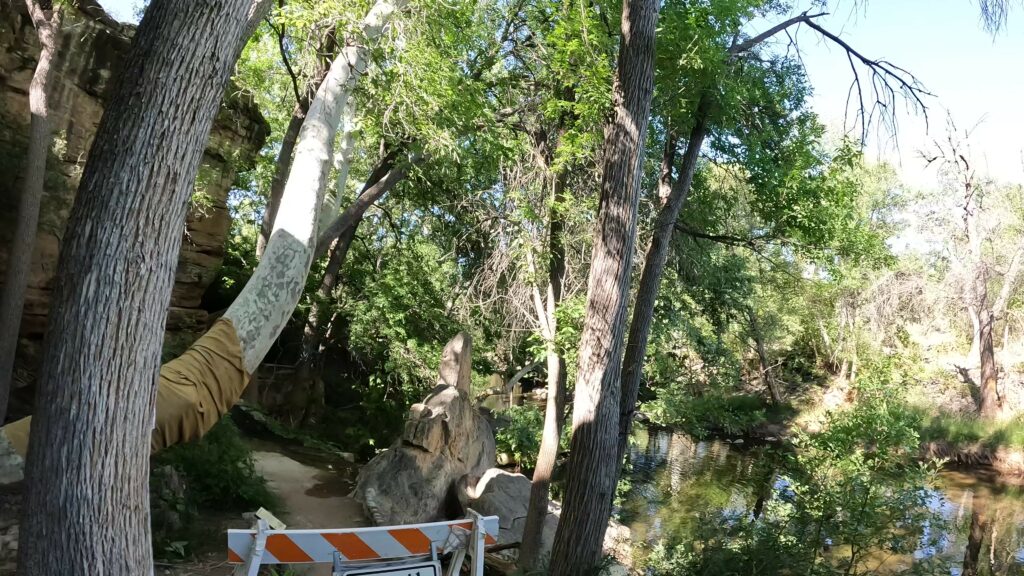
It’s so peaceful when the sound of water is spilling into the canal. There are shaded benches at each end of the subterranean waterway, um, but it was off-limits under construction when we were there.
At the outlet, the Indians diverted the flow into an irrigation ditch centuries ago.
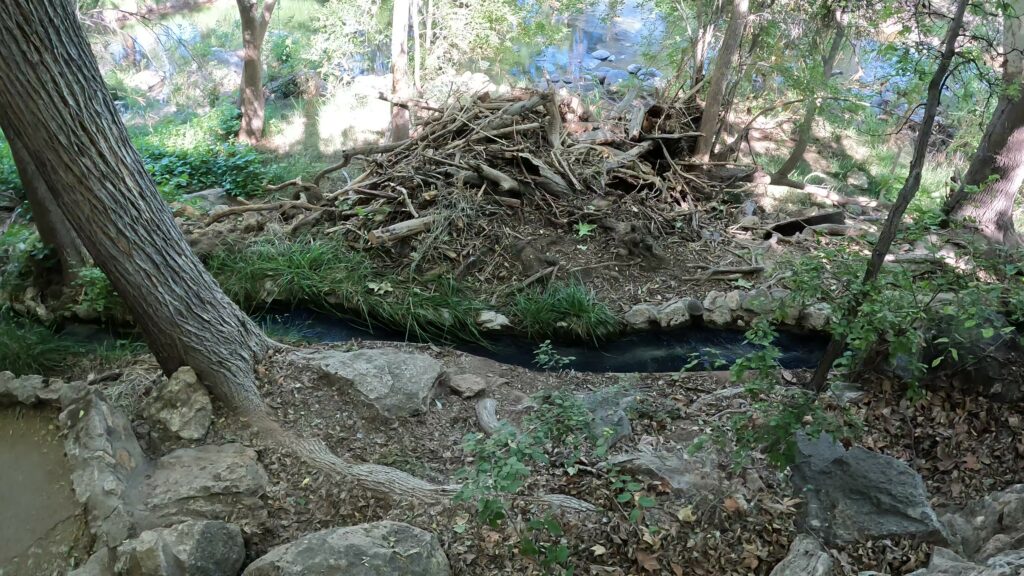
Native wildlife includes the Arizona gray fox, porcupine, beaver, chipmunk, cottontail rabbit, javelinas, skunk, and white-tailed deer. Snakes inhabit the area, rattlesnakes, bullsnakes, and gopher snakes. Lizards, such as the collared lizard, abound.
There are a multitude of birds and waterfowl that live or visit their area seasonally.
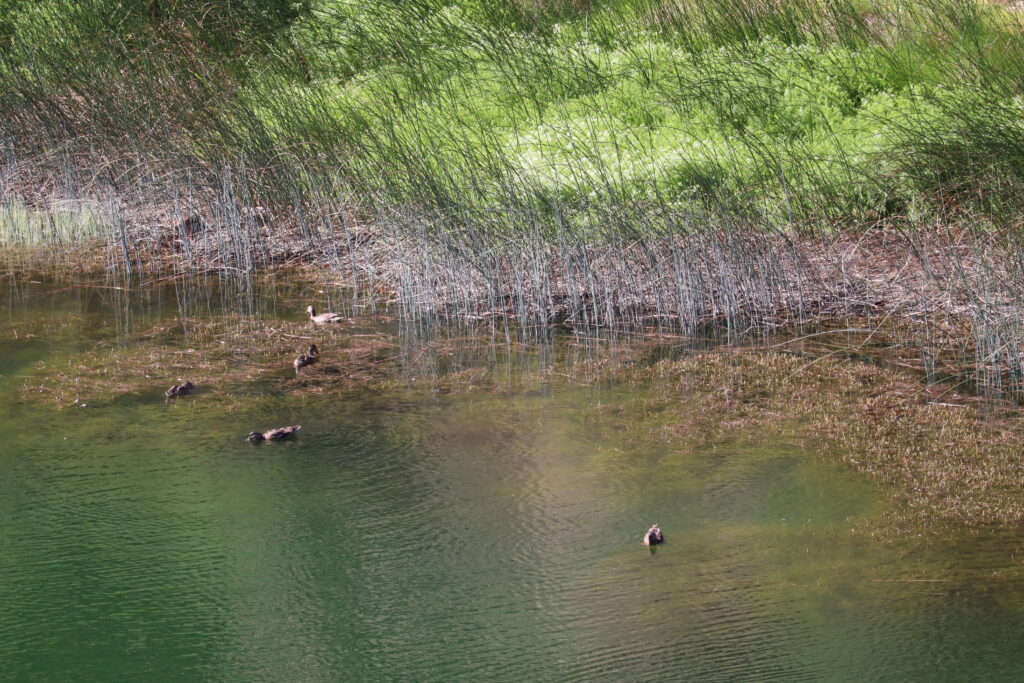
There are five unique species here evolved including a tiny amphipod, leeches, water scorpion, spring snail, and a single-celled diatom.
What to expect on the trail?
It’s an easy to moderate trail and it’s a round trip of 0.8 miles. There are steps involved to go down to the Verde River to see where the water comes through the wall from the well. There is a bit of incline going to the well, but all in all, not too bad.
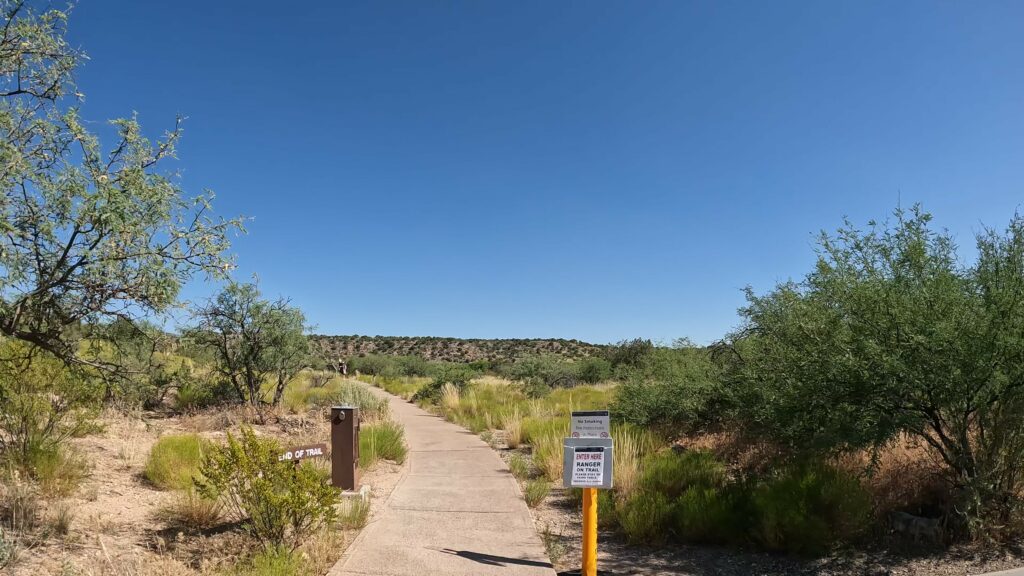
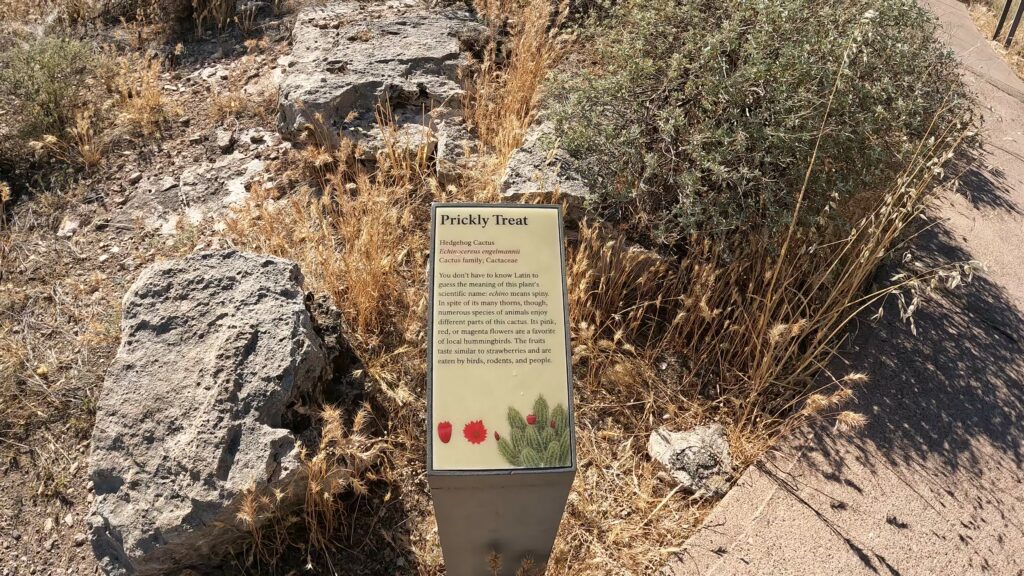
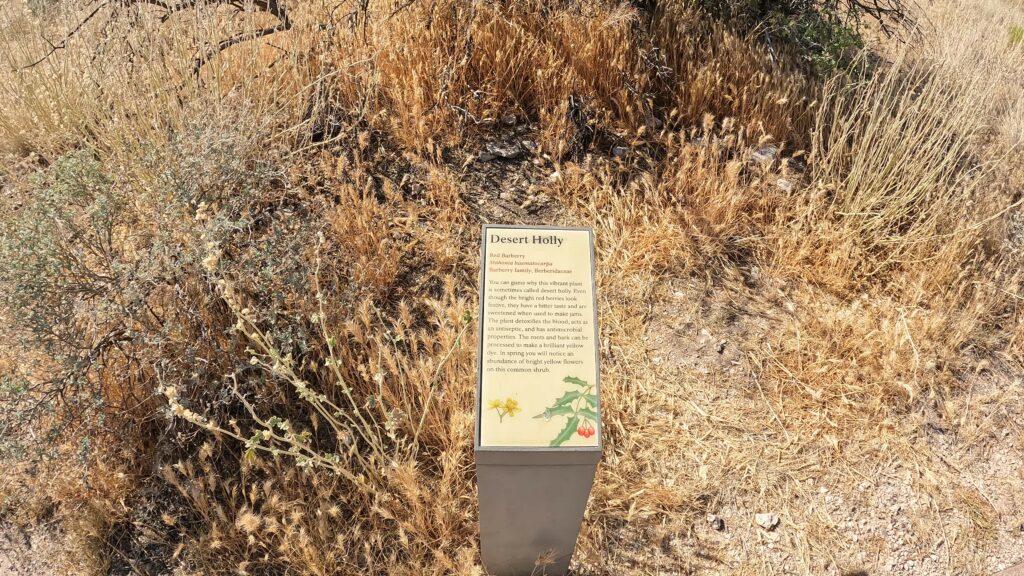
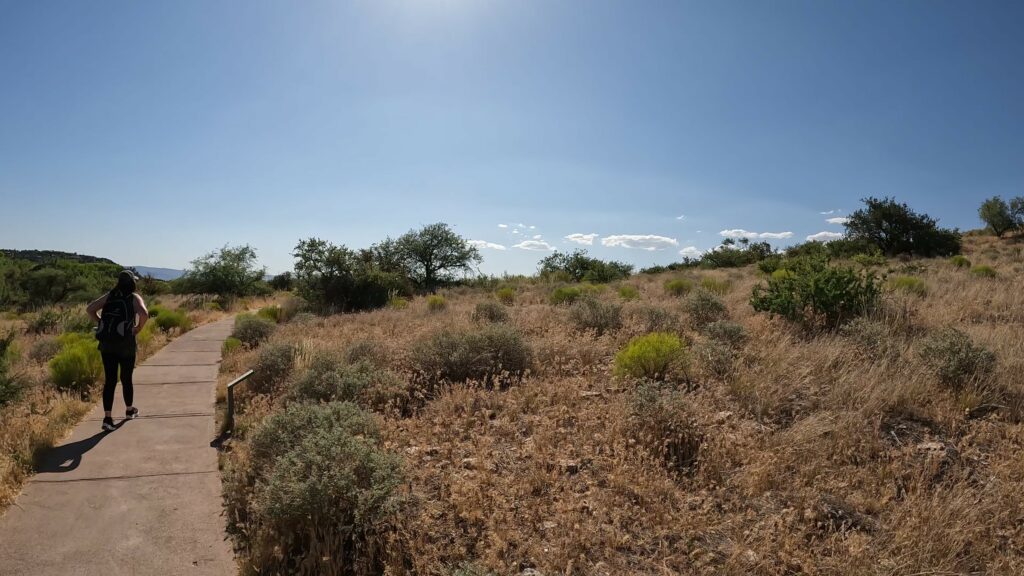
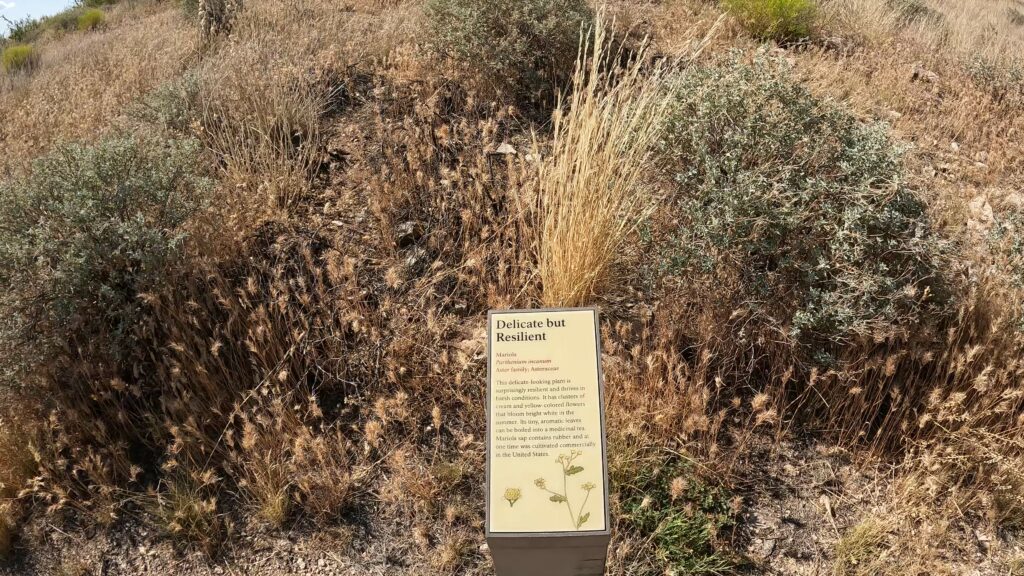
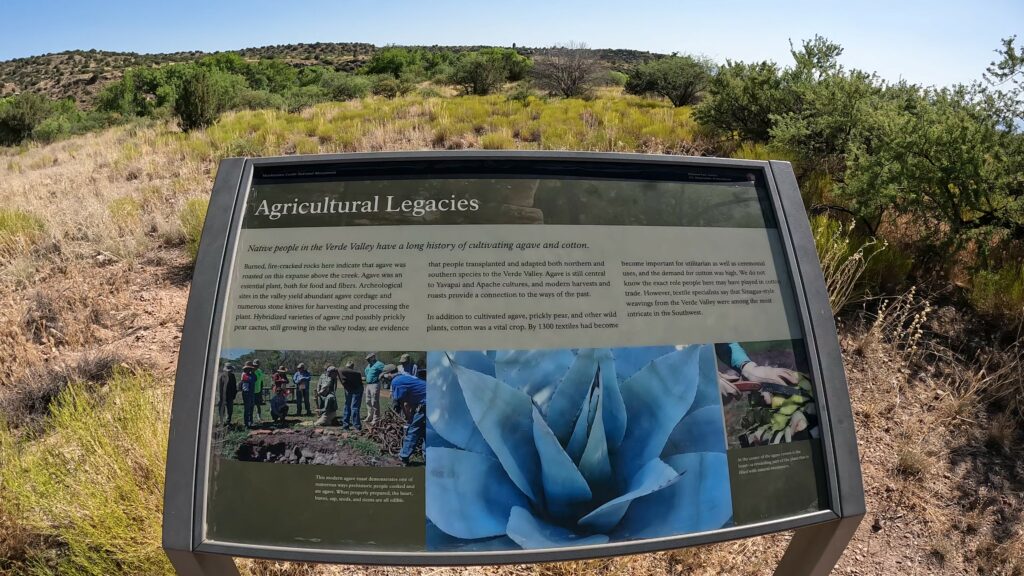
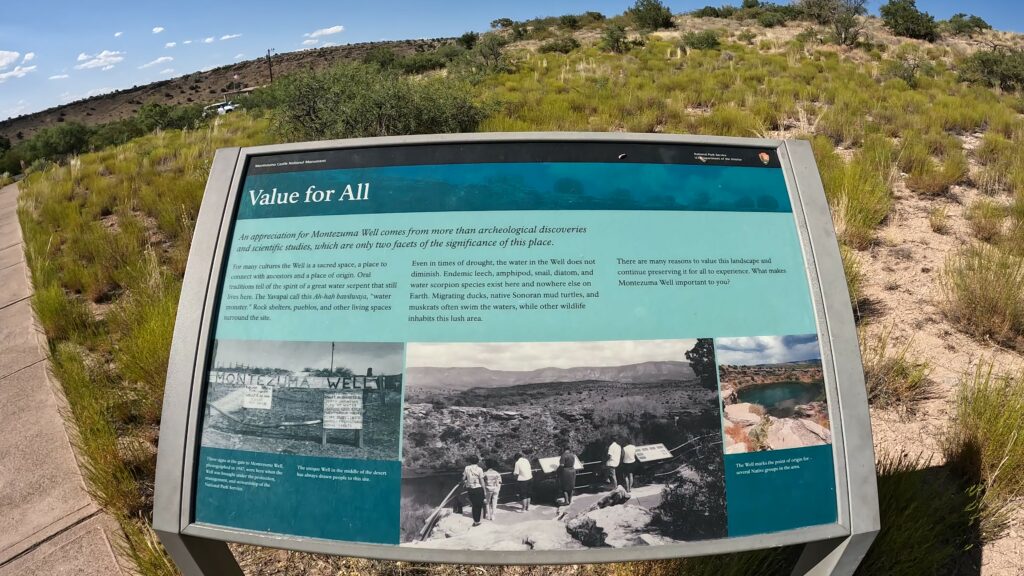
The Montezuma Castle National Monument combined with this stop at the Montezuma Wells National Monument was well worth the visit. Both National Monuments are close to each other, so that works out very well from a timing standpoint. You can check out the National Park Services website for additional Montezuma Well National Monument information.

You may also wish to visit Arizona State Historical Park Fort Verde, which is in nearby Camp Verde. It’s only about a four-mile jaunt to Camp Verde from Montezuma Castle National Monument. The State Park can be completed in 60 minutes so worth packing these together if you have the time.
If you like this content, I know you’ll enjoy the Montezuma Castle National Monument, its sister site, Fort Verde, and all the other epic Arizona trip videos to help you plan your next trip with your significant others. Don’t forget to subscribe so you can be notified of all my new posts.

Leave a Reply